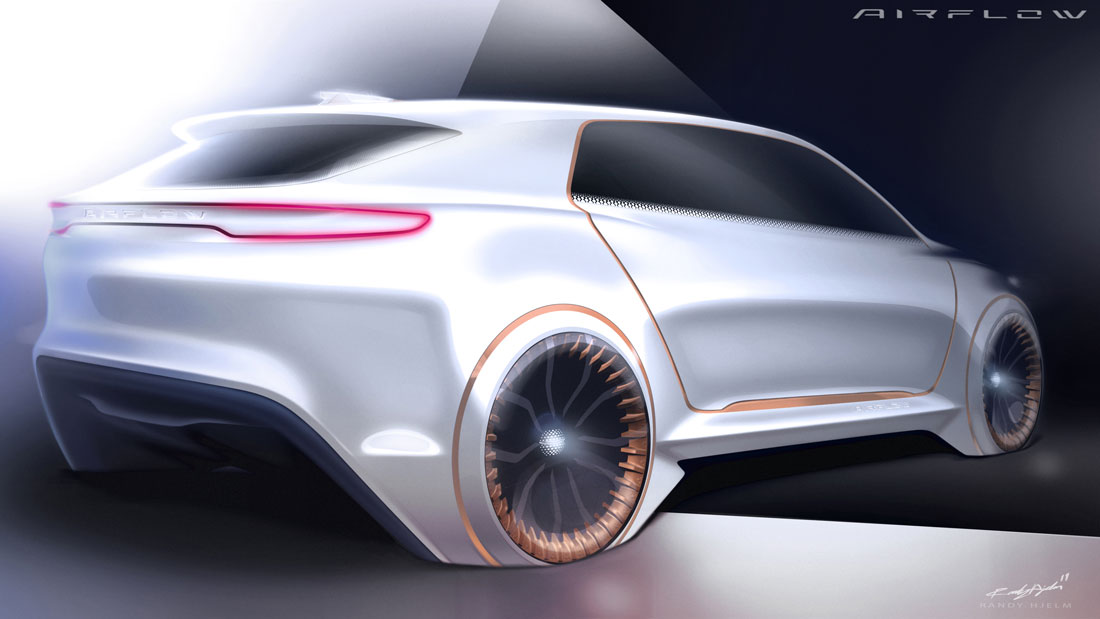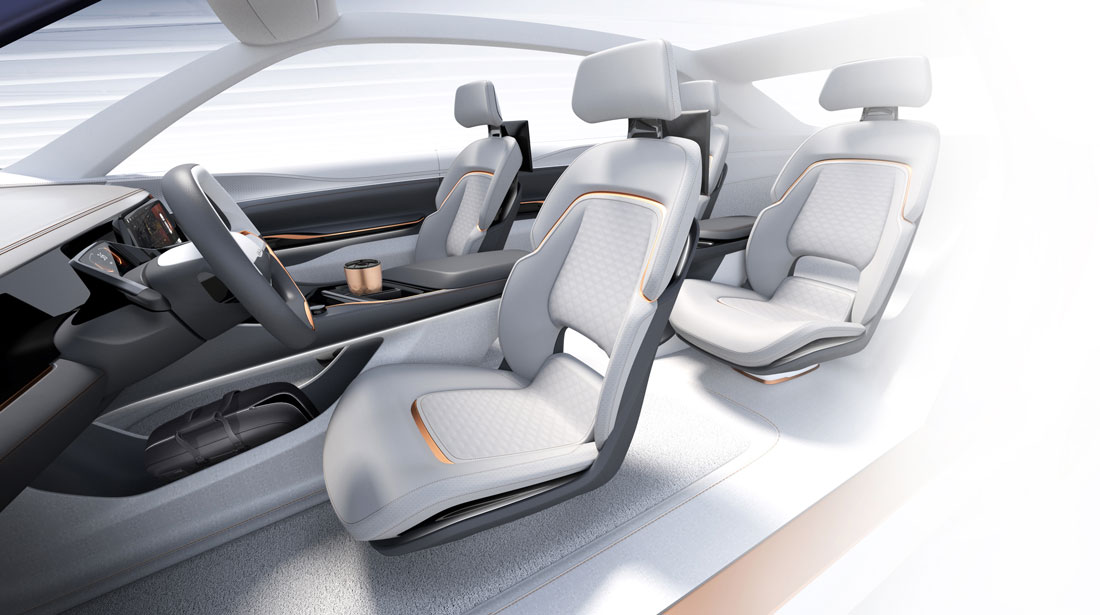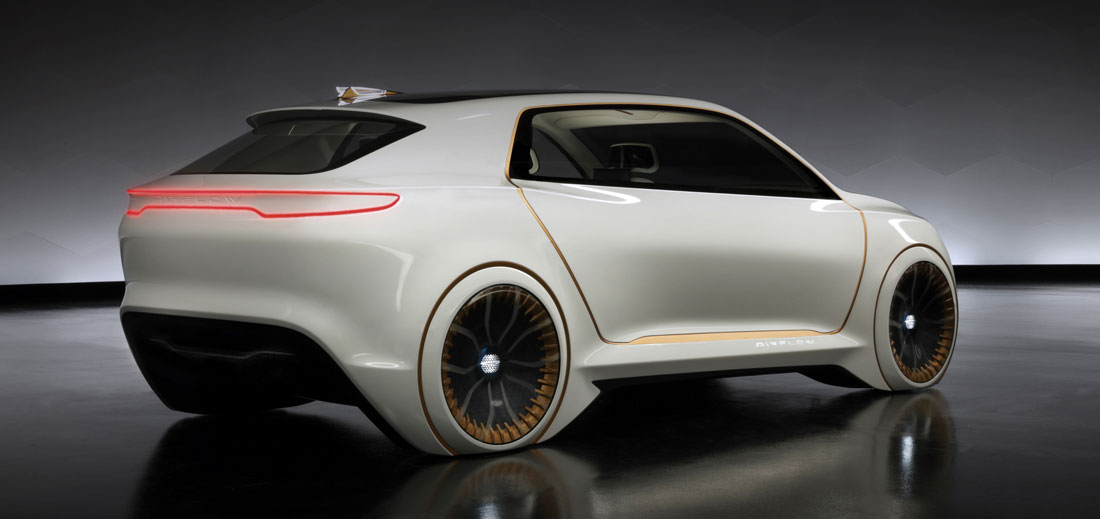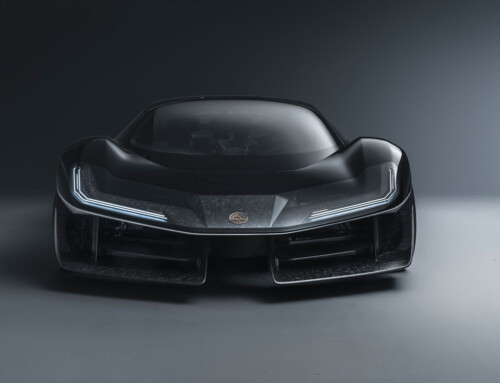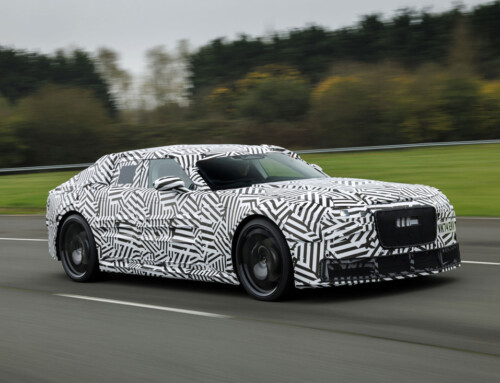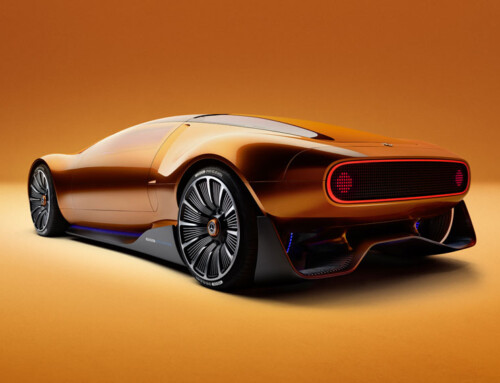If the vehicles of the future find themselves with more and more technology on board in the form of advanced driver assistance systems, augmented reality and information display screens scattered around the cabin, the real challenge for the user becomes being able to use them easily and intuitively.
Ideas for the future
With its Airflow concept, the FCA group is developing precisely these themes: “We started working on the Airflow project last year”, says Brandon Faurote, head of Fusion Studio and Partner Programs at FCA Product Design. “The initial idea was to create a prototype to represent our idea of the exterior, interior and user experience of the future”.
Long wheelbase and dynamic silhouette
The dominant features of the car are a long wheelbase, sleek lines and a dynamic but not extreme silhouette. “The Airflow reinterprets a flowing muscular body that becomes one with the wheels”, while the wheels are inspired by the mechanical elements of an electric motor and create a movement effect similar to the internal movement of a watch. The concept is based on the Chrysler Pacifica, but is driven by a 100% electric powertrain.
High quality materials and light colours
In developing this concept car, the designers started from the interiors, with the milling of some rigid evaluation models, while the exteriors were developed entirely digitally. The designers focused mainly on the interaction between man and technology: “When you climb into the cabin of the Airflow you are enveloped in a premium environment with a relaxing atmosphere created by the use of quality materials and light colours. The real luxury is to find yourself in an open, airy space with maximum integration of on-board technology”, continues Chris Benjamin head of Advanced Interior Design Jeep and Chrysler, FCA Product Design.
Integration between interior and technology
The User Experience evolved on the basis of the principles of interaction between the car, driver and passengers. The Airflow has eight displays, six on the centre console and two in front of the seats. “One of the things we are most proud of is the perfect integration between the interior and the technology. We have several screens, some smaller and some larger: tablets control the main functions, such as navigation, while from the mini-displays you control the details, such as cabin temperature and seat heating or cooling.
Interaction between cars and occupants
The intention was to avoid loading all the information on to a single screen, so that multiple players can intervene on the touch screens independently and according to their needs”, says Vince Galante, Head Of UX Design, FCA Product Design. “The occupants can also transmit navigation routes or multimedia information to the driver’s screen without him having to take his hands off the steering wheel. This improves the lives of passengers and increases safety on board”.


